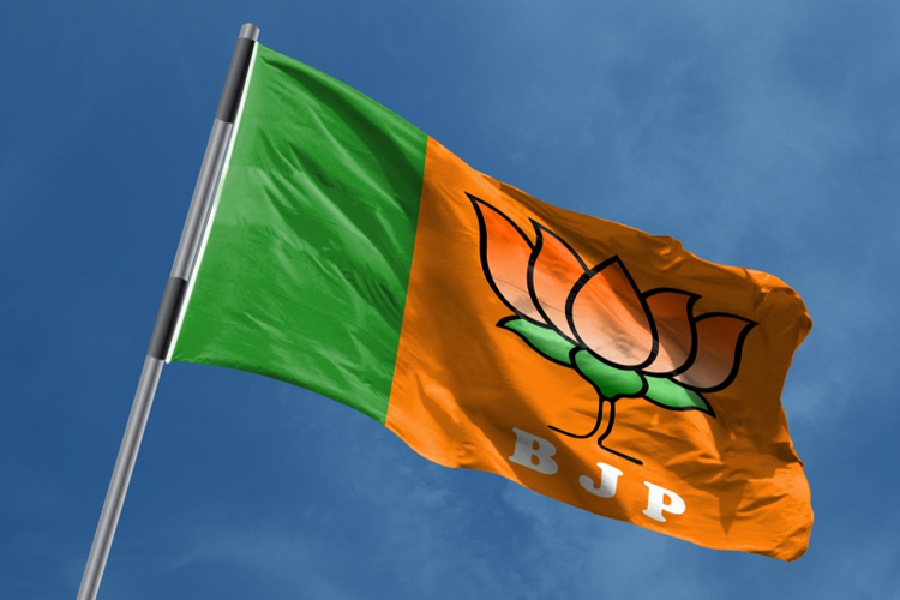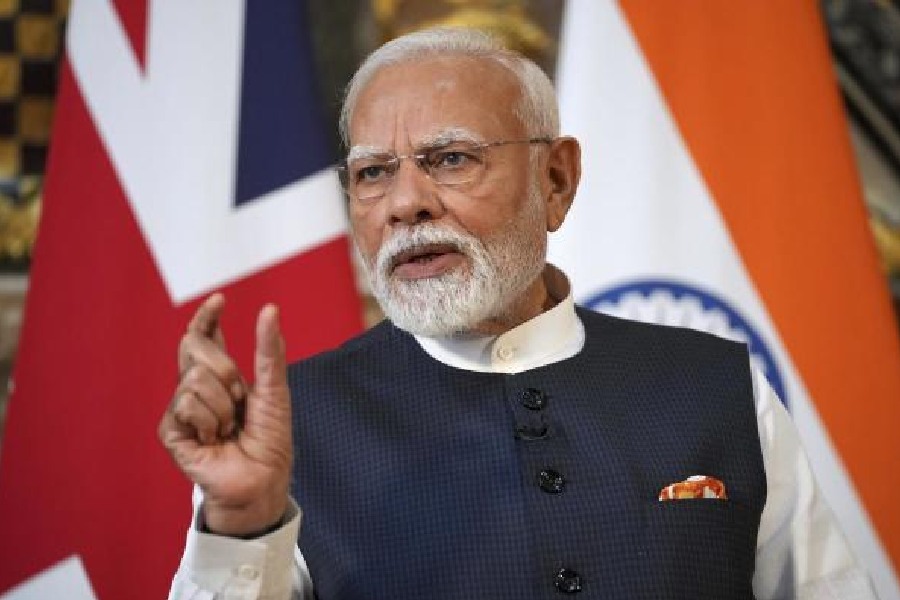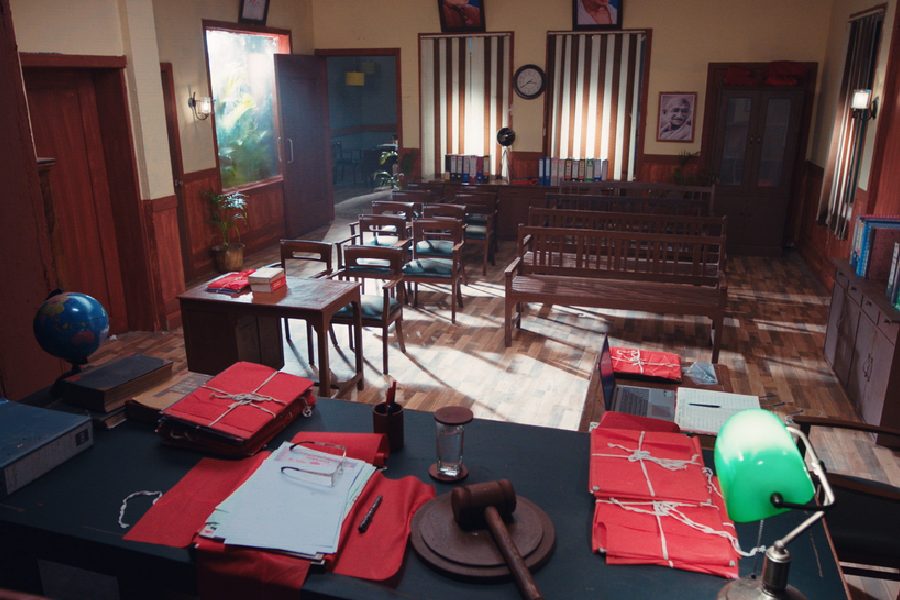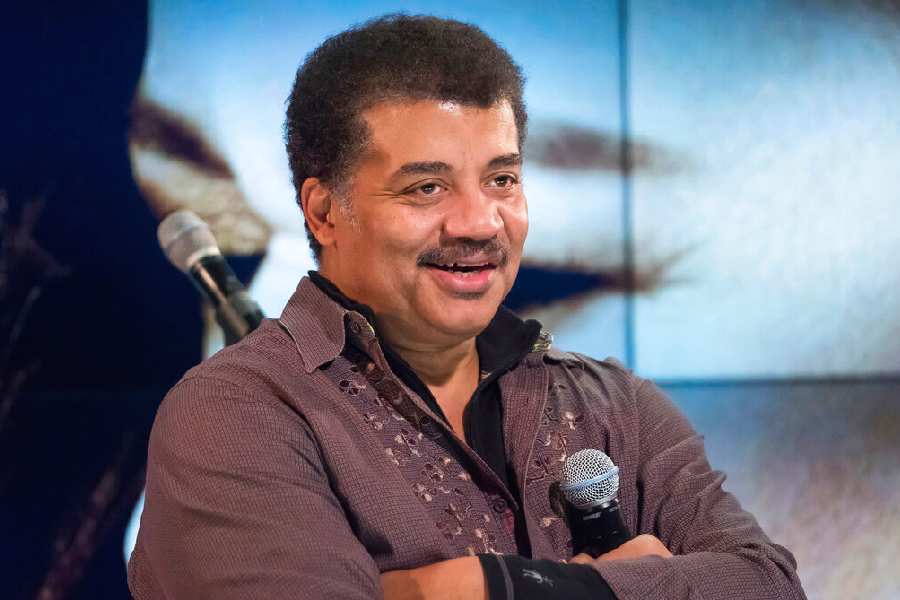 |
She is porcelain pretty, amazingly talented She?s intelligent and down-to-earth, too. And if her jawdropping flexibility doesn?t make her life look straight out of a Hindi movie script, nothing else will. Daughter of the celebrity ?modern dancer? Daksha Seth, Isha Sharvani is just 19, brought up in the picturesque ashram of Kerala ? quite distant from television and even newspapers ? though she has toured the world with a dance troupe. This slip of a girl transforms like a chameleon in front of the camera, and you must believe this: she?s too shy to shake a leg at a disc! Talent scouts say that it took Subhash Ghai some doing to convince Isha to actually star opposite Vivek Oberoi in Kisna ? in which, we predict, Isha Sharvani will answer to the call of ?who?s that girl??.
We catch up with the new comet, waiting to shoot across the Bollywood skies. And her time begins today...
Q: Writer Sachin Bhowmick of Kisna was so impressed by you that it is said that he not only calls you ?the rubber woman? but also recommended you for Koi Mil Gaya II. What do feel about that?
(Grins) Actually, I am hyper-flexible. And I have injured myself due to this hyper-flexibility. I can actually touch my head to the ground forwards and backwards while standing and can bring my head through my legs bending backwards. Now, I am actually learning to control this flexibility!
Q: You owe that to dance?
I have always been hyper-flexible. But I am also part of The Company with my mother and guru Daksha Seth. She has learnt Kathak for 30 years, Chhau for 20 years and is into Kalaripaitru since 1984. We also do a lot of yoga, gymnastics and explore aerial work, rope work, flying work. I have gone abroad to learn and teachers from abroad have come to Kerala to train us ? martial artistes, ballet teachers, modern dance teachers, they have all done workshops with us to develop our bodies. Hence, no matter whom we work with, we can adapt to any style of dance. Whether it be Hindi movie dance or Western contemporary dance, my mother?s style makes our body completely agile. She lets our dancers get on stage only after they complete three years of training, and that shows!
Q: Did you learn dancing only from your mother?
Yes. Completely.
Q: What is similar between dancing and acting?
Both are ways of expression. Obviously, dance has its limitations. What you can say through words, you cannot do through dance. But I personally think you cannot preach through dance ? you cannot tell them what to do. That is my way of looking at it. And where dance has its drawback, theatre takes it on from there. We can express to the audience better through this medium. But both are performing arts and go hand in hand.
Q: What about cinema?
Cinema is one of the most fantastic media. It reaches such an amazing amount of people socially. In India, there are over one billion people who love movies. There is no better way to reach the Indian public than through movies.
Q: Being a dancer has an added advantage then in films?
Yes, that is the way I feel. I don?t see how being a dancer would be a drawback. And I don?t see moving on to movies as giving up dancing. Both can go hand in hand, since our Hindi movie industry is a music medium. Ever since the beginning of the industry, dance and music and acting have made movies and movie stars. Look at Madhuri Dixit, Govinda, Hrithik?everybody, our biggest stars have been really fantastic dancers?
Q: Why did you refuse Kisna at first then?
I did not say ?no?. In fact, Mr Ghai came to see my mom?s institution. We live in this very quiet ashram where there are hundreds of trees, coconut palms, and there are animals everywhere. He wanted to see it. In the film, I am a village girl. And he came to our ashram to see our lifestyle. He was looking for a dancer who could do my mother?s style of dancing and he zeroed in on me.
Q: What was your reaction?
When I listened to the script, I said I would love to play Luxmi in this movie. It would just be my privilege to act in the film.
Q: But this is not the first role that came your way.
Yes, and I have said ?no? to a couple of other film offers before. Then, I was happy with what I was doing.
Q: What else made you make up your mind to do this movie?
The maker. With Mr Ghai, I knew I am going to learn so much and just going to grow as an actress. I have seen Taal. I have seen the way Mr Ghai has got performances out of the actors, how he shoots his songs, dance, his music ? I love the soundtracks of Taal and Pardes and have seen them before, when we we were in Kerala. You see, all Hindi movies don?t come to Kerala. There, the audience for Hindi films is quite small.
 |
Q: So you did not say an initial ?no? to the movie at all?
Absolutely not. I was so happy, it is unbelievable. It is, in fact, that moment where I started believing in destiny, especially because it was not like a planned decision.
Q: Did you ask your mother for her feelings on this issue? What was her opinion? What about the other members of the family?
When Mr Ghai was in Kerala, we got to know him as a person. My parents trusted him and I think it was that trust that my parents knew ?our daughter is in good hands? that they let me do the film. Basically, when I think of dancing the first person I think of is my mother. When I think of acting the first person who comes to my mind is Mr Ghai. They are my gurus.
Q: Being a Subhash Ghai heroine is not easy. How was the experience of working in Kisna?
I have never met anyone like Mr Ghai. It is so much fun on the sets especially when we are doing dance sequences. We had a great time. I have never met anyone like him. He looks into costumes (even a small bindi that adorns your forehead?so much detailing), the lighting, the makeup, story (he is there for the scripting as well), the publicity, the music?. He is there in every single aspect from beginning to end and oversees every minute bit. It is seriously mind-boggling, but then we have had so much fun.
Q: What makes the experience memorable for you?
Well, the various sequences that my mother and Subhashji used to make. He used to tell me, ?Well, now I want something like this and you go ahead and experiment. Do all that you can to bring that out. Let us not make everything look so choreographed and tailor-made. Let us have something which is to look like a girl who is expressing herself through movement ? as she cannot speak out her feelings to the person she loves.
Q: What about your costar Vivek Oberoi? How is he?
The best word to describe him is bindaas. I was always a big fan of his. But you don?t feel, ?Oh, my God, I am doing a scene with Vivek Oberoi?. He just becomes a pal.
Q: Tell us about playing Luxmi the dancer? What was the easiest part and what was the most difficult?
The easy part was the dancing bit. The most difficult part was that we both think so differently. I think like a modernday girl. The way she thinks would make sense in a setting like in the 40s ? she thinks like a girl of her time would think. It is hard enacting scenes where she and I don?t think the same way. That is where the acting comes in. You don?t always do things the way you see or perceive. It is about the way a girl in that era with her kind of explosive temperament would have handled it. Like if Luxmi is hurt, she would scream, shout, yell. I would be very quiet; I would be the silently hurt type. I won?t be very vocal about it.
Q: How different is dancing on stage from dancing in a movie?
At the end of the day, whether you are dancing on stage or in a film, both are performing acts. But on stage, you have only one chance of getting it right. There is no second take. That is why acting for the camera is comparatively easier. You can make a mistake and adjust it in a retake.
Q: How was it on the first day of shoot?
It was a dance scene and I was as nervous as I was on the day of my first stage performances. I had butterflies in my stomach and my heart was like, thumping. But the minute they said ?Action?, it was like I am on stage. You forget the 150 people, the 300 eyes, you forget the madness, you forget the camera that is three feet away from you and you are there in a moment. It is unbelievable. That is why I love dancing. In a disc, I am too shy to dance. But as a performer dancing in front of 20,000 people, I love it. For me, more people mean more confidence. It is not me on stage, and it is not me in Kisna. It is a lovely feeling to let go of the I, to let go of yourself. And just be ?there?.
Q: What abut the emotional scenes, the romantic ones? How did you handle that?
It takes a bit of getting used to. You are not used to interacting or crying in front of people you don?t really know. And so it takes a bit of getting used to, to be so uninhibited in front of people. But in two three days you get used to the crew and the sets ? everyone has stopped being a complete stranger. But, in the beginning, yes, it took a bit of restraint. I am used to dancing with partners; so I guess it was easier for me than anyone who has absolutely no experience.
Q: Heard Subhash Ghai had said that he wouldn?t have made Kisna if you had declined to be a part of it?
I have not heard any such thing. So I cannot really comment on it?.










